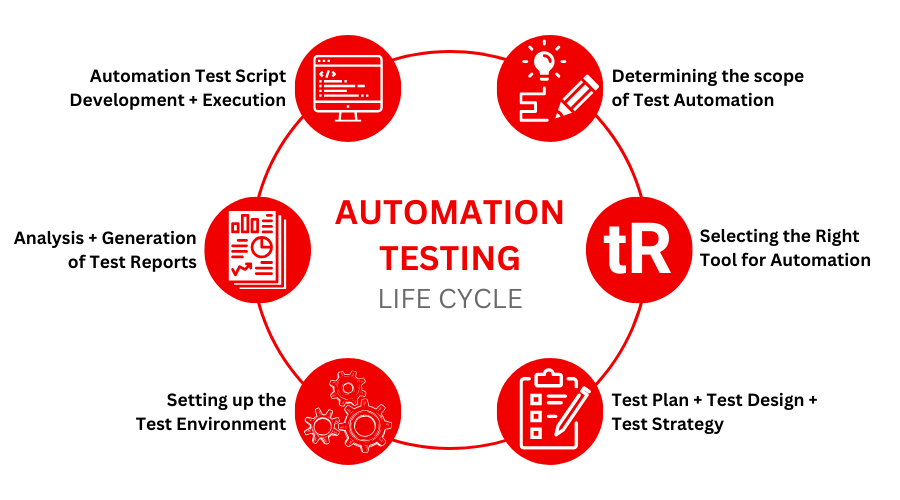The Future of Software Application Development: Harnessing the Potential of Automation Testing for Faster, Much More Trustworthy Launches
The possible advantages of automation testing are substantial, promising not just to expedite release cycles however likewise to improve the total quality and uniformity of software program items. In a landscape where speed and precision are vital, harnessing the capabilities of automation testing stands as a crucial technique for remaining in advance.
The Power of Automation Checking
In the world of software application advancement, the execution of automation screening has actually shown to dramatically enhance effectiveness and top quality assurance processes. By automating repetitive and lengthy manual screening tasks, software application groups can enhance their testing efforts, lower human errors, and increase the overall development lifecycle. Automation testing permits for the quick implementation of examination instances across different settings and setups, supplying developers with fast comments on the quality of their code changes.
Among the key advantages of automation screening is its ability to enhance test insurance coverage, ensuring that more features and functionalities are extensively checked. This extensive testing strategy helps identify issues early in the growth cycle, minimizing the possibility of pricey insects reaching manufacturing. Additionally, automation testing advertises constant integration and continual shipment practices, enabling groups to release software program updates a lot more frequently and reliably.
Accelerating Launch Cycles
The acceleration of launch cycles in software growth is critical for staying affordable in the rapidly progressing tech landscape. Reducing the time between releases enables firms to respond promptly to market demands, include user responses immediately, and outpace competitors in delivering ingenious features. By embracing agile techniques and leveraging automation testing tools, growth groups can streamline their processes, determine insects previously, and guarantee a better item with each release.
Speeding up launch cycles additionally makes it possible for software application business to keep an one-upmanship by quickly addressing safety and security susceptabilities and adjusting to transforming regulative requirements. Additionally, regular launches assist in structure client depend on and commitment as customers gain from continual renovations and pest solutions. This repetitive technique promotes a society of continual renovation within growth teams, motivating collaboration, development, and a focus on delivering worth to end-users.
Making Certain Constant Quality Control
In the middle of the increased launch cycles in software application development, keeping regular quality control becomes paramount for making certain that each model satisfies the greatest standards of functionality and reliability. Consistent quality guarantee involves a methodical technique to testing and reviewing software to recognize and rectify any flaws or problems without delay. To attain this, software application advancement teams should establish robust QA processes that are integrated throughout the growth lifecycle. This includes defining clear top quality requirements, conducting comprehensive screening at each stage of growth, and leveraging automation testing devices to enhance the procedure.
Overcoming Common Testing Obstacles
Attending to and fixing usual testing challenges is crucial for making sure the efficiency and performance of software growth processes. One prevalent challenge is the lack of detailed examination insurance coverage, where testers might overlook certain scenarios, resulting in prospective pests getting on the last item. This concern can be minimized by comprehensive test planning, incorporating diverse testing techniques, and leveraging automation testing to enhance protection. One more typical difficulty is the upkeep of examination manuscripts, especially in active atmospheres where regular modifications happen. Examination manuscript maintenance can be structured by utilizing durable test automation frameworks that offer easy script adjustments and updates. Additionally, collaborating testing efforts across various teams and departments can position a challenge because of interaction gaps and differing top priorities (automation testing). Implementing clear interaction networks, developing standard processes, and cultivating collaboration with devices like problem trackers and project monitoring systems can assist overcome this difficulty and make sure seamless screening sychronisation. By proactively dealing with these obstacles, software application advancement teams can improve the quality and integrity of their releases.
Applying Automation Checking Techniques

Once the test cases are chosen, teams must invest time in designing robust test scripts that are maintainable, recyclable, and scalable. Collaboration between developers, testers, and stakeholders is vital to make certain that the automation testing aligns with the general job goals and needs. Continuous integration and implementation pipelines can additionally enhance the automation screening process by instantly triggering tests whenever brand-new code is devoted. By embracing automation screening strategies, software program development teams can achieve much faster checking cycles, higher test coverage, and ultimately deliver even more dependable software program launches.
Final Thought
In conclusion, automation screening gives a powerful tool for increasing release cycles, ensuring consistent quality control, and overcoming usual screening challenges in software growth. By using the possibility of automation testing strategies, companies can achieve quicker and a lot more reputable releases. automation testing. Accepting automation screening is important for staying competitive in the fast-paced world of software program development

In verdict, automation screening offers a powerful device for accelerating release cycles, making sure regular top quality guarantee, and overcoming typical testing challenges in software application development.
Comments on “How Automation Testing Revolutionizes Quality Control Processes”